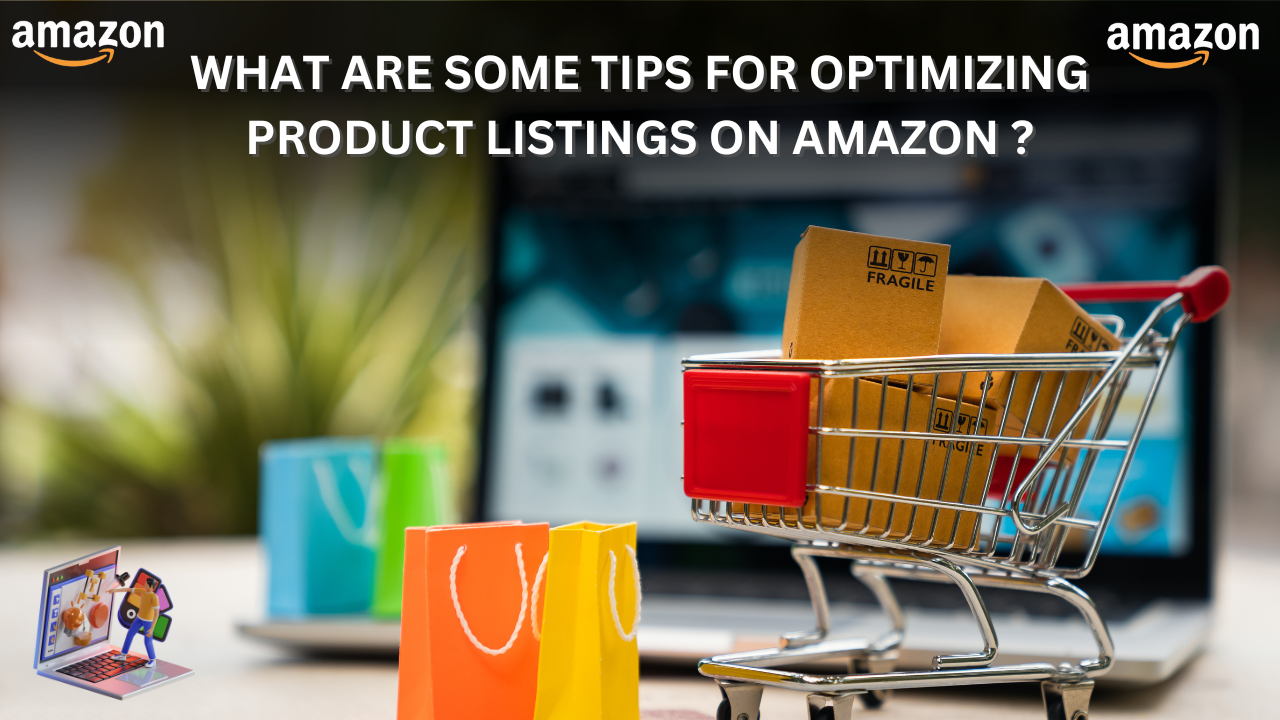
To optimize product listings on Amazon and improve their visibility, conversion rate, and ranking, consider the following key strategies:
1. Optimize Product Titles
- Use Keywords: Ensure that relevant keywords are included in your title to help the product rank in search results. Use terms that your target audience is likely to search for.
- Keep Titles Descriptive and Clear: Describe the product, its main features, and, if applicable, the brand. Avoid stuffing too many keywords as it can make the title hard to read.
2. Enhance Bullet Points and Descriptions
- Highlight Key Features: Use bullet points to quickly inform customers about the product’s essential attributes, such as dimensions, materials, and special features.
- Focus on Benefits, Not Just Features: Describe how the product meets customers’ needs or solves a problem. For example, instead of simply stating “Made of stainless steel,” you might add, “Durable stainless steel for long-lasting use.”
- Use Simple, Persuasive Language: A clear, concise, and persuasive tone helps convince potential buyers to make a purchase.
3. Leverage High-Quality Images
- Use Multiple Angles: Provide images that show the product from different perspectives, helping customers visualize the item fully.
- Include Lifestyle Images: Show the product in a real-life context to help customers imagine using it.
- Ensure High Resolution and Compliance: Images should be high-quality and meet Amazon’s image requirements, such as having a pure white background for the main image.
4. Incorporate Backend Keywords
- Add Hidden Keywords: Use Amazon’s backend search terms to add keywords that didn’t fit into the title or description. These don’t need to be visible to customers but help the product appear in search results.
- Avoid Keyword Duplication: Amazon doesn’t require repetition, so include unique terms only in the backend fields to maximize keyword diversity.
5. Encourage and Respond to Reviews
- Request Reviews: After a purchase, use Amazon’s review request system to gently encourage buyers to leave feedback.
- Respond to Customer Feedback: Address negative reviews to show customers you care about improving your product or service. Use this feedback to make improvements where possible.
6. Price Competitively
- Evaluate Competitors’ Pricing: Regularly check the prices of similar items to ensure yours is competitive. Consider using discounts or bundles to add value for the customer.
- Leverage Amazon’s Pricing Tools: Tools like Amazon’s automated pricing can help keep your product competitively priced, especially if you’re aiming to win the Buy Box.
7. Utilize A+ Content and Enhanced Brand Content
- Invest in A+ Content: If you’re a registered brand on Amazon, add rich content like comparison charts, graphics, and expanded product descriptions to increase engagement and conversions.
- Add Comparison Charts: These can help customers understand differences if you offer multiple versions of a product, which may encourage them to make a purchase.
8. Monitor and Optimize Regularly
- Track Performance Metrics: Monitor your product’s click-through rate, conversion rate, and ranking regularly.
- Experiment with A/B Testing: Some sellers find success by testing different images, titles, or descriptions to see which versions perform better.
Optimizing Amazon listings involves balancing relevant keywords, appealing visuals, and informative descriptions to create a compelling, customer-centered experience that improves search ranking and sales potential







